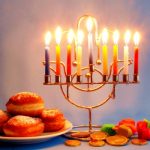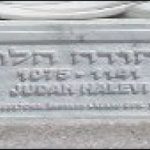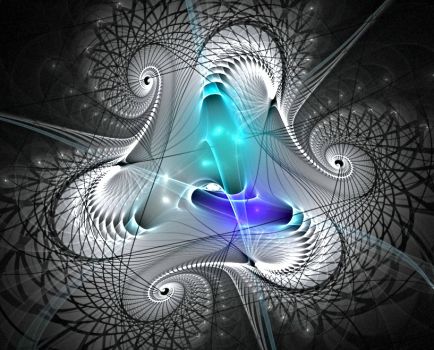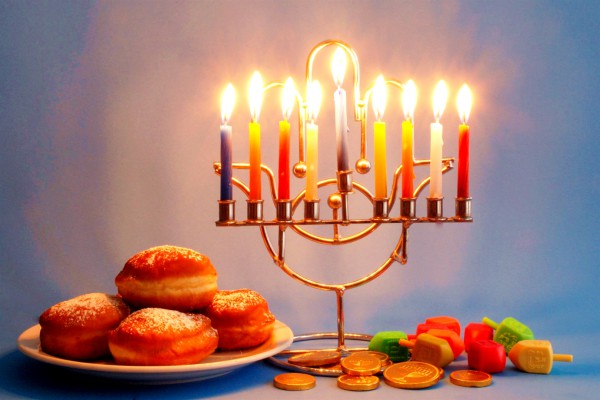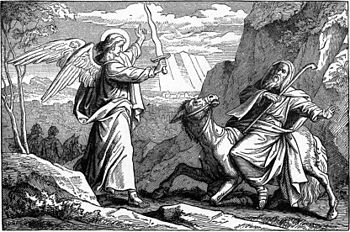
Click here to download PDF
Rashi argues on the Gemara?!?
“And You will keep My statutes and my laws that the man will do and live by them….” Rashi says, on the words “And live by them” in Olam Haba for if you say it is [life in] Olam Hazeh, he will at the end die. Rashi is in direct contradiction to the Gemara that says it is actually talking about life in this world and this is considered to be the primary source that in “Pikuach Nefesh” – life-threatening circumstances you can violate the whole Torah with the exception of the three cardinal sins and other circumstances that demand to die “Al Kiddush Hashem”. How can Rashi defy the Gemara?
First Beis HaMikdash and “Zos”?
“Bezos”– with this Aharon goes into the Kodesh”. The word “Bezos” is clearly superfluous. The Torah could have just launched into what Aharon has to do in order to enter the Kodesh HaKedoshim. As is the case with seemingly “extra words”, it is a fertile ground to say Drashos. Rashi himself says something cryptic. He points out that “Bezos” has the numerical value of 410 alluding to the amount of years the first Beis Hamikdash was standing before its destruction. What is the connection between that and what Aharon does to enter the Kodesh HaKedoshim? There are many speculations as to what Rashi means (for two very different speculations, see Sifsei Chachamim here and the Gur Aryeh of the Maharal from Prague). In the continuation of this article, we will offer our theory as to what Rashi was alluding to.
Meanings of “Zos”
The Midrash Rabba understands that “Bezos” is alluding to the merit with which Aharon can enter and it cross-references it with the Possuk from Tehillim that we say from Elul till Shmini Atzeres “Bezos in this, I feel secure” (Boteach). What is the merit of “Zos” that empowers the procedure that allows Aharon to enter the Kodesh HaKedoshim on Yom Kippur? The Midrash in one breath gives a whole string of possibilities all of which are “so that the Kohen Gadol goes in with bundles and bundles of Mitzvos”: In the merit of Torah (Devorim 4), as it says “Vezos Hatorah”; in the merit of Milah, as it says (Bereishis 17), “Zos brisi”; in the merit of Shabbos, as it says (Yeshayahu 56) “fortunate is the man who does “Zos” and the Possuk continues “observe the Shabbos”; in the merit of Yerushalayim as it says (Yechezkeil 5) “Zos Yerushalayim”; in the merit of the 12 tribes, as it says when Yaakov was about to bless them on his deathbed (Bereishis 49) “Vezos” that told them their father; in the merit of Yehuda, as it says (Devarim 33) “Vezos l’Yehudah”; in the merit of Yisroel, as it says in Shir Hashirim metaphorically about the Jewish people (Shir Hashirim 7), “Zos Komasech”; in the merit of Terumah as it says (Shemos 25) “Vezos Haterumah”; in the merit of the maaseros, as it says (Malachi 3) “test me please with “Zos” (referring to testing Hashem to repaying us ten fold for giving Maaser) and finally in the merit of the Korbonos that the P’sukim in this Parsha talk about. The Medrash is listing all these possibilities in a single long statement, implying that all these things are different aspects of “Zos”. Even though the Korbonos that Aharon brings on Yom Kippur are called “Zos”, nonetheless, Aharon requires the merit of all these other things that are called “Zos”, why?
Essence
There is a great area of mystery in the sciences and philosophy. What is true essence of being? What is “the thing in of itself”? Our senses only measure how they are affected. What we mean by color is merely how the light from the object impacted our eyes. What we mean by sound is how the vibrations affected our ears. What we mean by taste is which taste buds were stimulated. Similarly, when we measure an object using instruments we are just seeing how the instruments were affected. Even if the affects on our senses and instruments would be absolute measures (Which they are not!), nonetheless it is the “properties” of the object that generate those impressions and measurements such as color, shape, sound, weight etc., not “the thing in of itself”. The color, the shape and all properties of all objects can change. More importantly, we can get other things to generate the same stimulations, this is what is called “imitation”. What is the real “thing in of itself”? Whatever it is, it is that which carries and permeates those properties. The metaphor for what we are describing is the center. It’s not on any side but it is where all sides branch out from.
“Zos” – Malchus
The Torah with its exact language revealed to us in concept what the essence is. The word “Zos” according to Kabbalah means the attribute of Malchus, Divine Kingdom. The pure essence of everything is how it is a part of Hashem’s kingdom. My Rebbe, Maran HaGaon HaRav Moshe Shapira zatzal, explained to us that this is the secret behind our terms for objects. We either call them a “Davar”, which literally means ‘word’ or ‘edict’ because everything exists by the Royal command of Hashem. Alternatively, an object is called a “chefetz” which means literally ‘will’ because everything exists by Hashem’s will. With this we can understand the metaphysical underpinnings for the law of conservation of matter: “Matter can neither be created nor destroyed”. Obviously it can not be created, because only Hashem can create something out of nothing and nowhere. Matter can’t be destroyed because it exists by Hashem’s will and word. Even though things are constantly losing their form and adopting new forms, “the thing in of itself”, which is Hashem’s will and word, is eternal and is constantly ‘reappearing’ in more refined forms. This world was built out of the matter that composed previous worlds and Olam Haba will be built out of the matter of this world. The outer appearance which our senses and instruments pick up on will change and be replaced by a higher revelation of “the thing in of itself” but “the thing in of itself” is eternal.
Our Essence
The question of “what is the essence?” applies to us: Who are we really? If we go by our observable actions, speech, and thoughts, we’d have a severe identity crisis: are we good or bad? The principle that Am Yisroel can always do Teshuva and attain Kapparah demonstrates that in essence we are good and the “bad” that we do, say, and think, are just “properties” that can be shed and discarded. On Yom Kippur in particular, which is a day of Teshuva and Kapparah, we need to ‘whittle’ ourselves down to the point of our essence which is totally good. This is the secret behind the two amazingly diametrically opposed forms of service that are unique to Yom Kippur. On the one hand, the Kohen Gadol goes into the Holiest of Holies which is beyond earthly space and is actually the point of origin of all space. In the Kodesh HaKedoshim is the Even Shesiya, the foundation stone that all reality branched out from, point center of reality. The Kohen Gadol sheds all of his mortality as the Yerushalmi and Zohar explains he is on the level of an angel when he goes into the Kodesh HaKedoshim and that is “Bezos” – to go back to the central pure point of essence which is all good. Diametrically opposed to this is the “Seir La’Azazel” where the Torah commanded us(if not for the Torah’s command it would be idolatry!) to shed and offer our sins to the Satan and with that throw our sins out of reality. These two diametrically opposed services compliment each other. We have whittled ourselves down to the point of essence that is nothing more than a part of Hashem’s Kingdom and we have jettisoned all our external properties and threw them out of the reality of Hashem’s Kingdom.
Torah Shabbos & Yerushalayim
This power of “Zos” is reflected by all the different examples brought by the Medrash. There is no contradiction between them. They are all just different manifestations of the concept of “Zos”. Beginning with the Torah which is the original formulation of Hashem’s will and word that all reality was built from. The Mitzvos of Bris Milah and Shabbos are considered to be as important as all the 613 Mitzvos and are basic aspects of being “Jewish”. The importance of Shabbos is well known and as we have mentioned many times, it is point center of time, as the six days of the week represent the six edges of the three dimensions and Shabbos, the “seventh” is the center. Yerushalayim which encompasses the Beis HaMikdash is the center of the Globe which is aligned with the Beis HaMikdash in Heaven – it is the cosmic center of space.
Bris Milah
Bris Milah is synonymous with the term “Jewish”. The Mishnah says in Nedarim that if a person takes an oath not to get pleasure from anyone who is “circumcised”, he is prohibited to get pleasure from any Jew in the world, even if that Jew has not performed a Bris Milah, and he is permitted to get pleasure from any Goy, even if that Goy circumcised (not for the intention of converting). The same is true in reverse. If a person takes a vow not to get pleasure from anyone uncircumcised, he may not get pleasure from any Goy, circumcised or not, and he may get pleasure from any Jew, circumcised or not. Meaning to say: Bris Milah is a concept synonymous with being Jewish. With this we can understand the famous Gemara that relates that when Dovid HaMelech was in the bathhouse felt bad that he had no Mitzvos to do. Then he remembered the Bris Milah and that made him happy. The commentaries are bothered by how that consoled him. The Mitzvah of Bris Milah was done to him many years earlier as a baby. He should sooner find reassurance from the Tzitzis and Tefillin he had only taken off a short time before! The answer is: Bris Milah represents the very essence of being Jewish that he takes with him wherever he is, even where he can’t do Mitzvos.
Terumah Maaser & Korbonos
The Terumah, the Maasaros and the Korbonos are actually the essence of all our possessions. The aspect of our grain that we grow that will stay with us forever is what we gave to the Kohanim, the Leviim, and the poor. That is the essence of the money that we actually take with us (our folklore is full of many tales of G’dolim that when asked how much money they have, they mentioned only one tenth of their possessions on record – when asked about it they said “the maaser that I give, is all that I truly have because the merit will stick with me forever). What we truly have from the livestock that we own are the Korbonos that we bring. On a deeper level: The Divine attribute of “Malchus” which is the essence, is the tenth of the Ten Sefiros, hence “Maaser”, one out of ten.
Shevatim Yisroel Yehuda
The “Twelve tribes of Israel”. What makes them add up to twelve? Why are they not twelve separate nations? Because they share a common essence. The same essence that we call “Bris”, the same essence that we call “Jewish”. The same essence that is called “Yisroel” and that is why the twelves tribes and Yisroel are both called “Zos”. This is a common essence that permeates the whole nation. When G-d forbid, we are whittled down to our current state, with ten tribes missing, we are called “Yehudim” – Jews as we are the remnants of the Kingdom of Yehuda . It is a term that we find in Tanach from the time we went into the Babylonian exile and it means that even though we’ve lost most of our people (for the time being) we still retain our national essence and that is the secret that Yehudah is called “Zos” and all the remaining Jews are called “Yehudim”, even though most of Klal Yisroel are missing, we still have our essence!
Essence of Life
We know that Jewish life is dear to the point that we can violate the whole Torah to save a single Jew, with the exception of the particular sins that can never be committed. What is the essence of the Jewish life that makes it so important? What makes it better than animal life? That is what Rashi came to explain: What makes Jewish life so valuable is that every moment of a Jew’s life in this world could be converted into eternal life because in every moment in this world you can do a Mitzvah which merits Olam Haba. As Chazal tell us in a few places, “someone can acquire Olam Haba in one instant”. The Rambam in his Peirush Hamishnayos on Makkos says that even just one Mitzvah done with absolute perfection, done just one time, can merit Olam Haba. Rashi was not coming to contradict the Gemarah that this Possuk of “Live by them” is the source that one can violate all the Mitzvos in order to save a life. What makes Jewish life so important? Rashi explains: the essence of a Jew’s life in this world is that it can be converted into the eternal undying life of Olam Haba.
Eliyahu Nadav Avihu
This whole Parsha is in context of “after the death of two of Aharon’s sons”. Rashi brings the Chazal that points out the simplest connection. Our Parsha explains how to go into the Kodesh Hakedoshim safely and to emerge and to continue to exist in this world with having had the elevating and cleansing experience. Nadav and Avihu didn’t merit that. They went in and didn’t come out alive. What happened to their eternal indestructible essence? They found their Tikkun in becoming incorporated into Pinchas which in turn is the reason why Pinchas became a Kohen as he absorbed their Neshamos and they were Kohanim. Pinchas becomes Eliyahu, who merited to be undying and to go heaven alive with his body and become a pure essence of life – and that’s Eliyahu Hanavi’s function! He is the guardian of the essence of life. That is the secret that he is the “angel of the Bris” and attends every Bris Milah. This is the secret that he will resolve all doubts (“Taiku”) and clarify who are the rightful owners are of any object, of which we said, “let it rest until Eliyahu comes”. He will announce the Geula and he will cause Techiyas HaMeisim. The common denominator of all these is: things thought lost or dead are restored. He is the guardian of the indestructible essence and causes the restoration and regeneration. This is the secret of what’s written in “Kisvei Ari” regarding “Ana Hashem”: “AN”A” is Roshei Teivos Eliyahu Nadav Avihu
First Beis HaMikdash & All Kedoshim
With this we go full circle back to the Rashi on “Bezos” that refers to the years that the first Beis Hamikdash was standing. The first Beis Hamikdash had forms of Divine revelation that were missing from the second Beis Hamikdash. It seems as we lost all those wonderful revelations and Rashi is saying that the years that the Beis HaMikdash was standing are like the years of a Jew’s life. The years of a Jew’s life are never lost as we explained above, the Jewish time on earth is converted into the eternal life of Olam Haba and that is the essence of life itself in this world and never ceases. So also, the wonderful levels of Divinity that were revealed and carried by the first Beis Hamikdash have not been destroyed. They still exist. They have an essence to them that endures for ever and we can forever draw strength from it. So also, all those who died “Al Kidush Hashem” are never lost and they forever inspire us, and their merit forever protects us. .ה׳ יקום דמם



